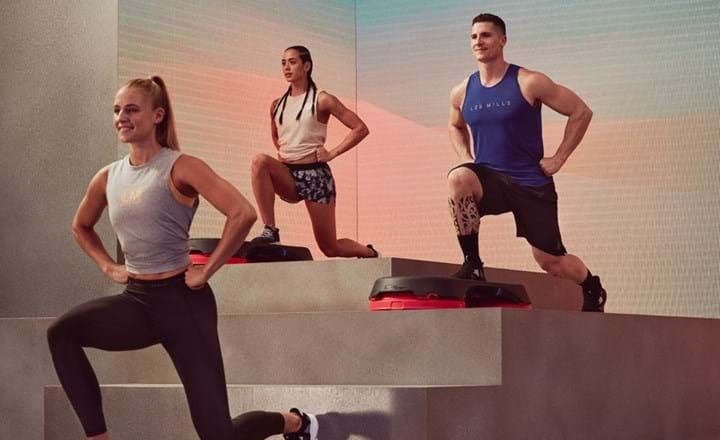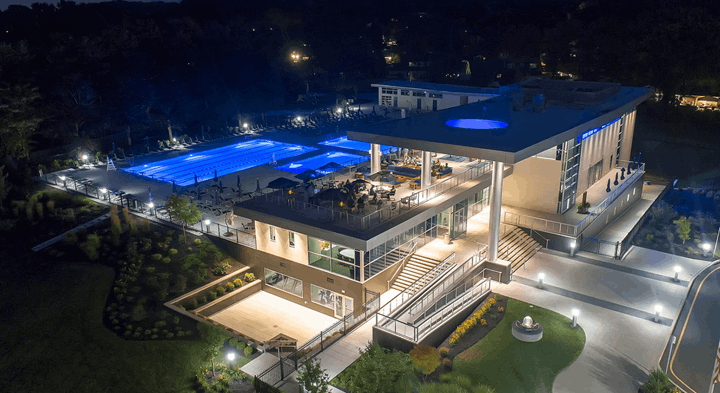
1. The most underrated aspect of member acquisition
Experiential design is one of the single most important elements for acquiring new members. It sounds crazy, but think of a club tour – which is typically the prelude to a new member joining your club. You’ll show them all your latest equipment and tell them they have 20,000 pounds of free weights to choose from, but they aren’t there to work-out at that time, so it doesn’t mean a thing to them. At the end of the day, a prospect is just trying to ascertain ‘is this somewhere I can visit three or four times a week and feel comfortable or isn’t it?’
So the design has a huge role to play in shaping the outcome of that tour, helping to eradicate any anxiety and make that prospect feel comfortable. Clubs need to consider how their design breaks down into the different touchpoints that members and prospects encounter, and how that makes them feel. Of course, once they become a member, it then comes down to the amenities and programs available, but also the design and how that shapes the experience. Can I take a good shower? Is there good sound quality throughout? What’s the flooring like? All of these things play into the overall experience and ultimately determine whether or not a member is happy with their club.
2. Drive major revenue through social design
With square footage at a premium in today’s hyper-competitive market, many clubs have lost sight of the value of designing opportunities for social interactions into their space. But this is actually a key component of how much you can charge.
We always talk about clubs being the third space between work and home, but are we actually doing anything to justify that notion, or do we just expect it to happen by default? I think it’s time we take control of that and consider how we design our clubs to be social spaces, particularly at a time when digital dependence is fuelling higher levels of isolation and loneliness in society. Boutiques built around the sense of close-knit communities are able to charge US$30 per class, and yet many people baulk at paying $30 for a whole month’s membership at a regular gym. That’s definitely food for thought and a big opportunity for larger clubs to consider how they can service this need for social interactions.

3. Delight a range of demographics
One of the questions clubs regularly ask is how to deploy a distinctive design in their club while still appealing to a broad range of demographics – and it’s a real challenge. This is most relevant in group exercise studios and sometimes it’s not just about aesthetics, but also having flexibility with the size and overall atmosphere, so smart planning at the outset is key. Clubs need to think about how their studio design can cater for an early-morning HIIT class, followed by a mind-body workout full of mums, and then a seniors’ class, before seamlessly transitioning back into a high-octane environment.
We recently designed a studio for a hotel chain that needed lots of flexibility, so we added a circular curtain that could close the studio up when they had a yoga class, adding intimacy and also nice effects through smart use of lighting behind the curtain. The curtain could then be fully-retracted to open up the studio for big classes needing more space and natural light. Little tricks like this can help clubs stay busy by pulling in different tribes throughout the day without being hamstrung by anodyne design.
4. Avoid the mistakes that everyone makes
In carpentry, they say ‘measure twice, cut once’. It’s the same with studio design – extra thinking in the planning stage will always pay off in the long run. This is particularly true when it comes to lighting, where clever installation can open up a world of possibilities around various colours and effects you can project onto walls.
But the biggest mistake people make when it comes to studio design is overlooking the need for proper storage. You typically need to allocate 15% of the size of your studio for storage, which seems like a lot, but it’s key to keeping the studio looking slick and staying flexible. You don’t want to be in the middle of a yoga class staring at a bunch of steps and bars – clutter is the enemy of great design.

5. Inspire members to market for you
Social media – particularly Instagram – has played a big role in helping to bring club design, and fitness in general, to the fore. If you can create a great-looking space to showcase their workout, then members are happy to snap, share on social media and rave about it to their friends. Create Instagram-friendly walls that say who your club is and help members to tease out ‘This is where I’m at. I’m having fun – why don’t you join me?’ Get this right and members become a major cog in your social media machine and will soon do your marketing for you.
6. Avoid the crowd if you want to stand out
When it comes to looking at other clubs, I take the ostrich approach and bury my head in the sand. Put simply, I don’t want to see what they’re doing because I want to come up with my own ideas and ensure they’re original. I’ll do it once in a while if there’s a truly innovative club that you have to see – I did check out 1Rebel in London, for example – but more often than not I’ll look elsewhere for my inspiration.
If you want to be truly forward-thinking you can’t be glancing over your shoulder, you have to look further ahead than your competitors. So instead, I pay extra to stay in cool hotels to see what they’re doing. I go to nice restaurants, I travel, and I seek inspiration from museums, nightclubs and bars. It’s important to look beyond our sector if you want to be original – I recommend that to all club operators.
7. Scale-up to supercharge your studio
When it comes to designing a great fitness studio, you need to ensure you have enough space for everybody. Too often, clubs undersize their studios. Having more people in a group fitness studio is a good thing – it’s smart from an economics perspective (see graphic below) and it builds a buzz. Then it’s about choosing the right lighting, flooring and acoustics to create a sense of theatre. But without a killer sound system and a rockstar Instructor who knows what they’re doing, you can have the best studio in the world and it is not going to sizzle. On a more practical note, equipment is another important factor that gets overlooked. Your storage solution needs to look great, optimise the space and make it easy to reach the equipment. We actually like putting the storage by the doors so you can grab your gear on the way in and put it back as you leave, without disrupting the rest of the class.

8. Go glam for the grand slam
I’m a sucker for glamour – both the look of a space and the way it makes you feel – so I try to design with glamour and seduction in mind. Glamour isn’t about coveting the lifestyle of a movie star, it’s about saying ‘Hey, there’s something about that life that appeals to me that I would love to have’. And it’s not external; glamour is internal. In fitness, we sell a powerful product that has the ability to transform people into their most glamorous self – whether you’re 30, 60, or even 90. A great workout can make you feel good about yourself and glamorous, whether or not you have a bit of a belly. It’s a beautiful event that isn’t respected enough in our clubs and it needs to be better celebrated. I don’t know how yet, but I’m working on it. In the meantime, give your club a spark by adding a dash of glamour next time you redecorate.
WANT TO TAP INTO 50-YEARS OF GROUP FITNESS EXPERIENCE?
Get in touch to see how your club can access the latest Group Fitness Management training and reap the rewards of a world-class group fitness offering.
BOOK NOW
